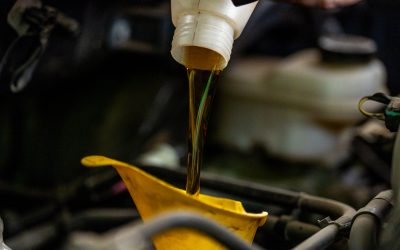Summer is right around the corner, and it’s time to give your vehicle the care and attention it needs after driving through a winter of harsh North Dakota conditions! As temperatures rise and road trips become more frequent, ensuring that your car is in top shape should be a priority. One of the most crucial aspects of vehicle maintenance is regular oil changes. Fresh oil keeps your engine running smoothly, extends its lifespan, and prevents costly repairs. In addition to changing your oil, we do a multipoint check on your vehicle to ensure you leave in a road-safe vehicle!
1. Change Your Oil and Oil Filter
Over time, engine oil breaks down and loses its ability to lubricate properly, leading to increased friction and potential damage to engine components. Old oil can also accumulate dirt and debris, which may clog vital engine parts and reduce performance. Changing your oil at the recommended intervals helps maintain engine efficiency and prevents unnecessary wear and tear.
Neglecting oil changes can result in poor fuel economy, overheating, and even engine failure. Many vehicles require an oil change every 3,000 to 5,000 miles, but it is always best to refer to your owner’s manual for specific recommendations. Keeping up with this simple maintenance task can save you from expensive engine repairs in the future.
2. Check and Refill Fluids
In addition to engine oil, your car relies on several other fluids to function properly. Coolant, brake fluid, transmission fluid, and windshield washer fluid should all be monitored and refilled as necessary. Cold winter temperatures can cause fluids to thicken or deplete, leading to potential performance issues.
Checking fluid levels regularly ensures your vehicle remains safe and responsive. For instance, low coolant levels can cause your engine to overheat, while inadequate brake fluid can reduce stopping power. If you are unsure about how to check or refill these fluids, pay us a quick visit, and we can help you address any concerns before hitting the road.
3. Inspect Your Tires
Tires play a crucial role in your car’s overall safety and performance, and winter driving can take a toll on their condition. Cold weather can cause tire pressure to drop, leading to uneven wear and reduced traction. As temperatures warm up, checking and adjusting your tire pressure ensures optimal handling and fuel efficiency.
Worn-out treads can compromise grip when roads become slippery. If your tires show signs of excessive wear or damage, consider replacing them to ensure a smooth and safe ride throughout the season.
4. Test Your Battery
Winter weather can be particularly hard on your car’s battery, as freezing temperatures can reduce its capacity and make it harder to start your engine. If your battery struggles to start your vehicle during colder months, it is important to have it tested.
A weak battery can leave you stranded at the worst possible time. Checking for corrosion on the terminals and ensuring a secure connection can help prevent electrical issues. If your battery is more than three years old or fails a diagnostic test, replacing it before the summer heat sets in is a smart investment in your vehicle’s reliability.
5. Examine Your Wiper Blades and Lights
Summer and Fall storms can significantly impact visibility on the road, making it essential to have properly functioning wiper blades. Over time, wiper blades can become brittle or streak across the windshield, reducing their effectiveness. Replacing them now ensures you are prepared for sudden downpours.
In addition to monitoring your wiper blades, checking your headlights, brake lights, and turn signals is crucial for safe driving. Burnt-out bulbs or dim lights can compromise visibility and increase the risk of accidents. Replacing any faulty bulbs ensures you can see and be seen on the road, making your summer drives safer and more enjoyable.
An oil change with us is an investment in your vehicle’s longevity and safety. A routine oil change, along with checking fluids, tires, the battery, and essential components, helps ensure a smooth transition into the warmer months. By following this checklist, you can enjoy stress-free driving and avoid costly repairs down the road. Prioritize your car’s maintenance this spring, and it will reward you with reliable performance all summer long!



